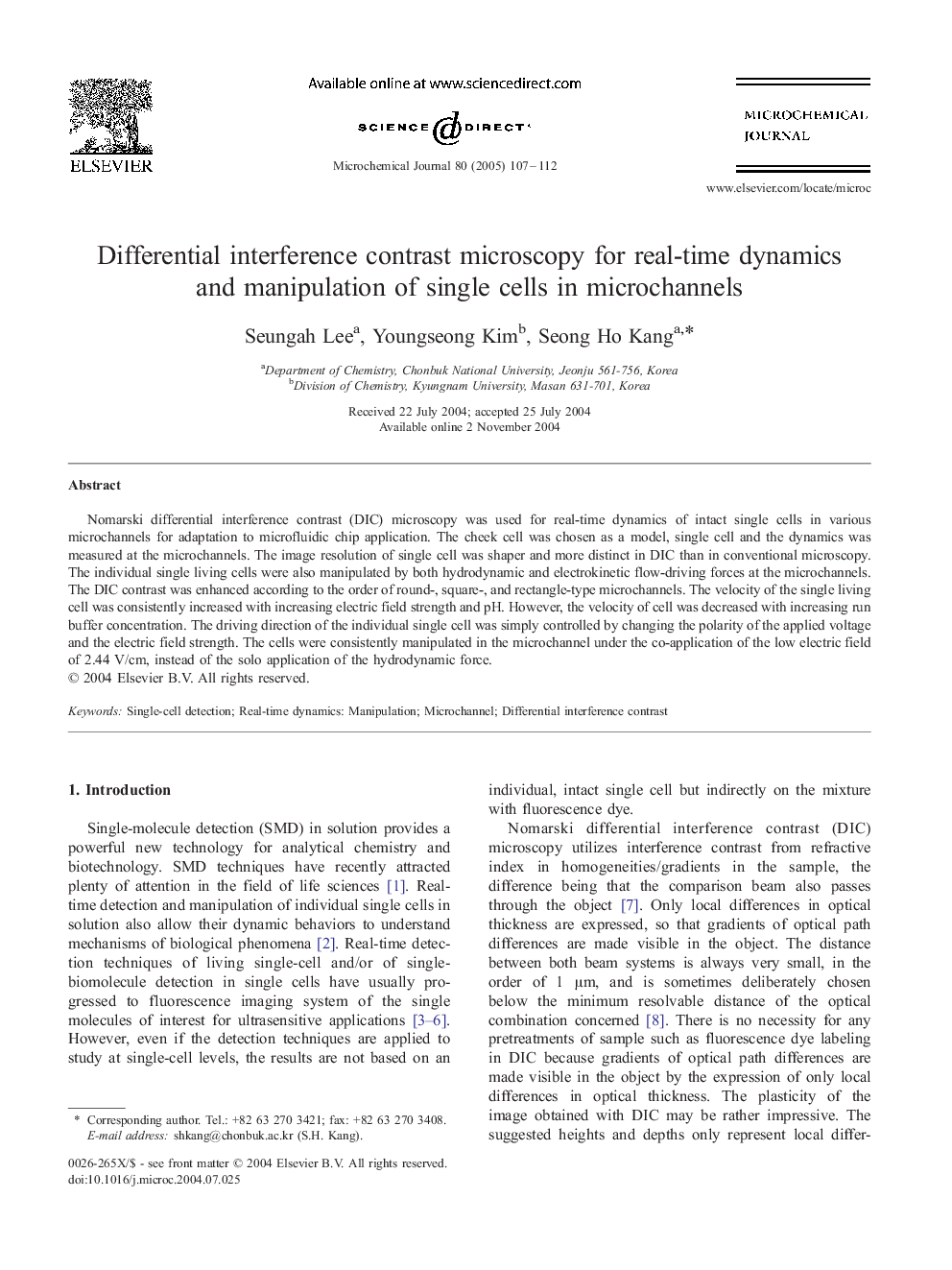| Article ID | Journal | Published Year | Pages | File Type |
|---|---|---|---|---|
| 9754984 | Microchemical Journal | 2005 | 6 Pages |
Abstract
Nomarski differential interference contrast (DIC) microscopy was used for real-time dynamics of intact single cells in various microchannels for adaptation to microfluidic chip application. The cheek cell was chosen as a model, single cell and the dynamics was measured at the microchannels. The image resolution of single cell was shaper and more distinct in DIC than in conventional microscopy. The individual single living cells were also manipulated by both hydrodynamic and electrokinetic flow-driving forces at the microchannels. The DIC contrast was enhanced according to the order of round-, square-, and rectangle-type microchannels. The velocity of the single living cell was consistently increased with increasing electric field strength and pH. However, the velocity of cell was decreased with increasing run buffer concentration. The driving direction of the individual single cell was simply controlled by changing the polarity of the applied voltage and the electric field strength. The cells were consistently manipulated in the microchannel under the co-application of the low electric field of 2.44 V/cm, instead of the solo application of the hydrodynamic force.
Related Topics
Physical Sciences and Engineering
Chemistry
Analytical Chemistry
Authors
Seungah Lee, Youngseong Kim, Seong Ho Kang,
